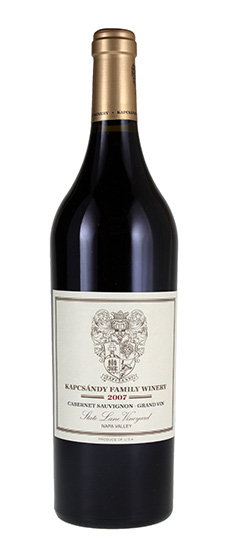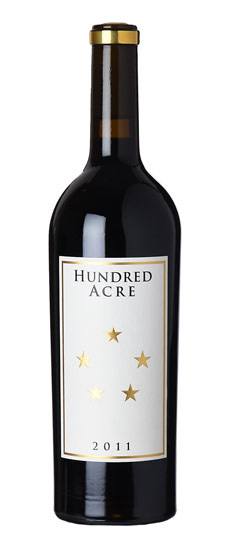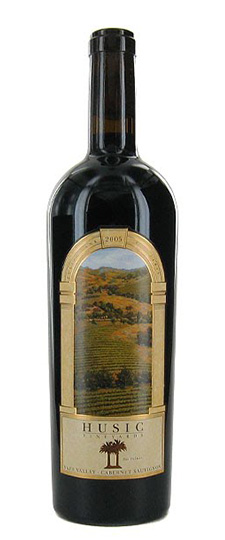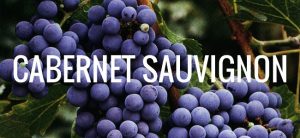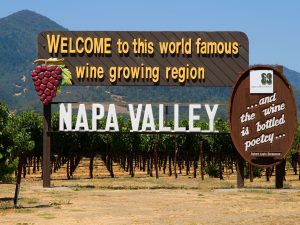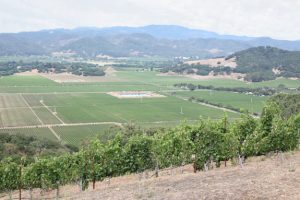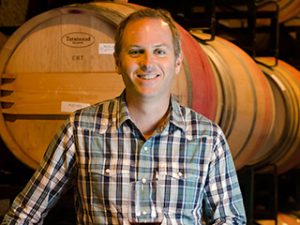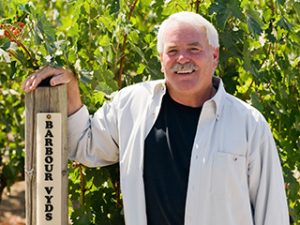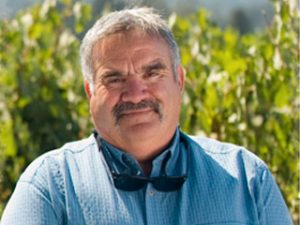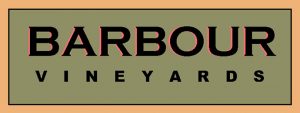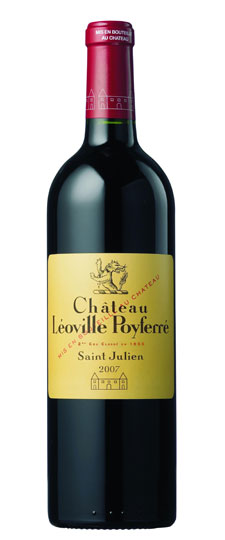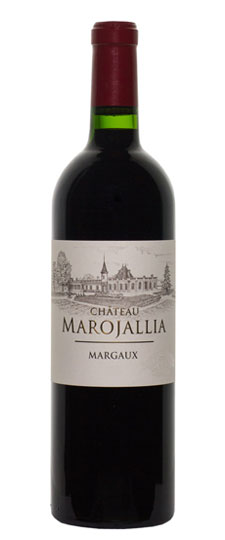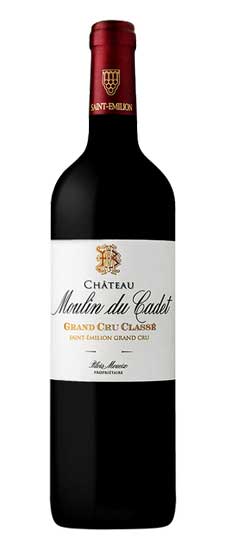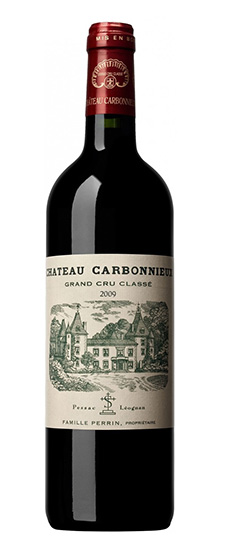Wine Score
Awards
2006 Husic Vineyards Cabernet Sauvignon wins Double Gold Medal
Stephen Tanzer’s International Wine Cella
Good ruby-red. Slightly underripe/overripe aromas of roasted tomato, mocha and truffle. Sweet, fat and pliant on the palate, with the truffley quality carrying through. Finishes broad and tannic
Husic Vineyards Cabernet Sauvignon 2006
The fruit for this remarkable wine was harvested by hand between October 4 and 27, 2006, entirely from the Husic Family Vineyard estate above the Stags Leap District. Picked at full flavor ripeness, the fruit was gently hand-sorted, destemmed, and sorted again until each grape was inspected. The grapes were carefully transferred to a fermentation tank without the use of pumps, and were fermented on the skins for more than 30 days. The inky-black wine was then transferred by gravity to new barrels and aged for nearly two years in caves held at 58° F. The best barrels were chosen for the final blend, and the wine was bottled without fining and with minimal filtration for clarity. The finished wine shows ultra-ripe character of Black tea, blackberry jam, anise, cedar, and a touch of milk chocolate. At first taste, the warm berry flavors are most apparent, with more savory cedar/tobacco/mocha notes supporting the fruit in the mid-palate. Consistent with the character often found in steep, rocky hillsides, the structure of the wine is dense and firm with tremendous flavor concentration, yet shows fully ripe tannins that gracefully yield to a lingering finish of sweet black fruits. of this wine. The finished wine is 98% Cabernet Sauvignon, 2% Petit Verdot; 100% Estate-grown, and aged in 90% new French oak barrels.
Grape Variety
Cabernet Sauvignon Wine
Cabernet Sauvignon is probably the most famous red wine grape variety on Earth. It is rivaled in this regard only by its Bordeaux stablemate Merlot, and its opposite number in Burgundy, Pinot Noir. From its origins in Bordeaux, Cabernet has successfully spread to almost every winegrowing country in the world. It is now the key grape variety in many first-rate New World wine regions, most notably Napa Valley, Coonawarra and Maipo Valley. Wherever they come from, Cabernet Sauvignon wines always seem to demonstrate a handful of common character traits: deep color, good tannin structure, moderate acidity and aromas of blackcurrant, tomato leaf, dark spices and cedarwood.
Used as frequently in blends as in varietal wines, Cabernet Sauvignon has a large number of common blending partners. Apart from the obvious Merlot and Cabernet Franc, the most prevalent of these are Malbec, Petit Verdot and Carmenere (the ingredients of a classic Bordeaux Blend), Shiraz (in Australia’s favorite blend) and in Spain and South America, a Cabernet – Tempranillo blend is now commonplace. Even the bold Tannat-based wines of Madiran are now generally softened with Cabernet Sauvignon.
DNA profiling carried out in California in 1997 confirmed that Cabernet Sauvignon is the product of a natural genetic crossing between key Bordeaux grape varieties Cabernet Franc and Sauvignon Blanc. Most wine authorities agree that this crossing happened only within the past few centuries, making the variety’s global fame and dominance all the more impressive.
There are two key reasons for Cabernet Sauvignon’s rise to dominance. The most simple and primordial of these is that its vines are highly adaptable to different soil types and climates; it is grown at latitudes as disparate as 50°N (Okanagan in Canada) and 20°S (northern Argentina), and in soils as different as the Pessac-Leognan gravels and the iron-rich terra rossa of Coonawarra. Secondary to this, but just as important, is that despite the diversity of terroirs in which the vine is grown, Cabernet Sauvignon wines retain an inimitable “Cab” character, nuanced with hints of provenance in the best-made examples. There is just a single reason, however, for the durability of the variety’s fame and that is simple economics; the familiarity and marketability of the Cabernet Sauvignon name has an irresistible lure to wine companies looking for a reliable return on their investment.
A vigorous variety (another characteristic in its favor), Cabernet Sauvignon produces a dense leaf canopy and relatively high grape yields, giving wine producers a fairly open choice between quantity and quality. Careful vineyard management is essential, however, to coax the best out of the fruit.
As a late-flowering and late-ripening variety, Cabernet Sauvignon grapes mature slowly. This can also work for or against wine quality; in a cold season or climate there is a risk of the grapes failing to ripen fully, while in most other conditions the steady rate of progress offers producers a wider choice of harvest dates.
Few would argue that the finest examples of Cabernet Sauvignon wine are found in Bordeaux and California, a standpoint supported by the 1976 Judgment of Paris. The past two decades have seen a raft of quality Cabernets emerging from New World regions such as Maipo in Chile and Coonawarra in Australia. These are gaining popularity with an increasingly broad consumer base as the world’s most prestigious Cabernet Sauvignon wines become prohibitively expensive. The variety has now made its way even into such established and traditional Italian names as Chianti and Carmignano (albeit restricted to 15 percent of the permitted blend), evidence that even the oldest and most traditional wine institutions now recognize the value of this most famous of grapes.
Synonyms include: Bidure, Bouche, Bordo, Bouchet, Burdeos Tinto, Lafite, Vidure.
Food matches for Cabernet Sauvignon include:
- Fillet steak with foie gras and truffles
- Beef wellington with honey roasted carrots
- Korean-style beef stir fried in garlic, soy and sesame
Region
Napa Valley Wine
Napa Valley, an hour’s drive north of San Francisco, California, is the most famous and prestigious wine region anywhere in the New World. Although a number of grape varieties are grown in the valley’s vineyards, the area is particularly known for its Cabernet Sauvignon. The classic ‘Napa Cab’, the archetypal Napa Valley wine, is a rich, oak-aged red with aromas of blackcurrant, boysenberry, liquorice, vanilla and smoky, bittersweet chocolate.
Situated immediately north of San Pablo Bay, the valley runs roughly SE – NW for approximately 35 miles (60km) between the Vacas and Mayacamas mountain ranges (to the east and west respectively). The scenic 40-minute drive between the Napa and Calistoga townships passes through some of the most valuable viticultural real estate on Earth.
There are several reasons for Napa Valley’s global renown as a wine region. Most obvious is that the wines are produced to high standards, in a popular style, and are very well marketed. Then there is the region’s accessibility from San Francisco. This draws millions of wine tourists to the valley each year to sample its wines and world-class gastronomy. And no less important (even after almost four decades) is the triumph of Napa Valley wines over their rivals from Bordeaux and Burgundy in the 1976 Paris Judgment.
Wine has been made in Napa Valley since the 19th century, but it is only since the 1960s that wine of any particular quality has been produced. The founding pioneers of Napa Valley winemaking were George C. Yount (see Yountville), and John Patchett and his winemaker Charles Krug, founder of the eponymous winery. Also of note are the Beringer brothers Jacob and Frederick, whose Beringer Vineyards (est. 1875) is one of California’s oldest continuously operated wineries and features on the the U.S. National Register of Historic Places. Robert Mondavi, who established his winery in 1966, is considered to be one of the pioneers of Napa’s modern wine industry, as well as being one of the first proponents of varietal labeling.
The range of grape varieties grown in the Napa Valley has evolved steadily over the 150 years since Yount planted his first vines. Cabernet Sauvignon has risen confidently to become Napa’s star performer, and is the most widely planted grape in almost all of the valley’s sub-regions. The notable exception to this rule is Carneros, whose cool, breezy mesoclimate is better suited to Pinot Noir and Chardonnay. Merlot is also prominent, although since its fall from favor in the 1990s it is now used mostly as a blending component for Napa’s Meritage wines and Bordeaux blends. Although it represents only a small proportion of the valley’s vineyard area here, Zinfandel remains significant in the Napa wine portfolio. Hillside sites above the valley floor provide exactly the kind of warm, dry environment in which Zinfandel (California’s signature variety) performs best, particularly on rocky, free-draining slopes.
White wines are strongly outnumbered here, but play a valuable supporting role, bringing an element of diversity to the valley. Once upon a time, Riesling was the variety of choice, but has now been replaced almost completely by Sauvignon Blanc and Chardonnay.
Climate, geology and topography are three essential components in what makes Napa Valley such a first-rate viticultural area. The combined influences of San Pablo Bay and the hills of the North Coast Ranges are responsible for the valley’s very particular mesoclimate. The bay generates morning fog, and the hills channel it inland, up into the valley. Without this fog that comes rolling in from the bays, the valley’s climate would be substantially warmer than it is, making it difficult to achieve structure and balance in the wines. The fog doesn’t reach the higher parts of the valley, however, leaving these to rely on the cooling effects of altitude to keep their vines in balance.
Producer Notes
THE VINEYARDS
Julie and Frank Husic purchased their property in 1995. They quickly learned the county was preparing to pass an anti-hillside planting ordinance, and if they wanted to plant vineyards, they would have to do it immediately. Viticulturist Jim Barbour of Barbour Vineyards was hired to help facilitate this process. The permit was granted in 1996 and the vines were planted in 1997. The vineyards were planted on land never lived on before. The ground needed to be cleared, dynamited and terraced for planting the three Husic Vineyards, totaling approximately nine acres. These vineyards can never be duplicated. The Husic Family is very grateful for the beautiful land they live on, and the incredible grapes produced by their three, small, rocky, steep vineyards over looking the Stags Leap District.
The Husic’s vineyards are planted with Cabernet Sauvignon grapes, and a tiny amount of Petit Verdot for blending. The vineyards go from the Valley floor to approximately 900 feet up the hillside. Some of the lower vines are planted in the “official boundary” of the Stags Leap District, and the remaining vineyards lie above the “line” of the appellation. It took four years to reach a mature crop, so the first year harvested and crushed was in the fall of 2001.
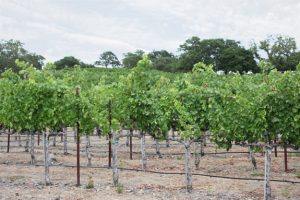 Husic Vineyards produces six wines: the estate grown Husic Vineyards Cabernet and Palm Terrace Cabernet, Husic Vineyards Chardonnay, and the Husic Vineyards Pinot Noir, Husic Vineyards Late Harvest Semillon and Palm Terrace Rosé from Pinot Noir. The Chardonnay and Pinot Noir grapes are purchased from vineyards on the “true” Sonoma Coast, near Occidental.
Husic Vineyards produces six wines: the estate grown Husic Vineyards Cabernet and Palm Terrace Cabernet, Husic Vineyards Chardonnay, and the Husic Vineyards Pinot Noir, Husic Vineyards Late Harvest Semillon and Palm Terrace Rosé from Pinot Noir. The Chardonnay and Pinot Noir grapes are purchased from vineyards on the “true” Sonoma Coast, near Occidental.
Mike Hirby – Winemaker
Michael Hirby grew up in a musical and creative family that had a deep love of food and cooking. At The Colorado College, he honed these skills and developed a serious interest in wine. After graduating with a degree in Philosophy, Michael worked as a Sommelier for a few years before deciding that winemaking was the next step; and after spending a few months exploring wine country in Spain and France, he made his way to Napa Valley. There he worked in the cellar with Les Behrens for 2 years, until he was hired to be the winemaker for Realm Cellars in 2002. Michael has since gone on to make wine for several different high-end projects, as well as his own brand Relic Wines, all of which have garnered consistently outstanding ratings.
Jim Barbour-Viticulturist
Jim Barbour was raised in Napa Valley and grew up working on his family’s ranch in Rutherford. With over 30 years of experience, he has become one of Napa’s most respected viticulturalists. During the span of his career, Jim has developed and managed over 1,200 acres of wine grapes. In addition to Husic, he has worked with such names as Blankiet, Grace Family, Hundred Acre, DR Stephens, Pillar Rock, Revana, Pride, Amuse Bouche, Au Sommet, and Von Strasser Vineyards. He received a Bachelor of Science in Plant Science (viticulture) from the University of California-Davis.
Nate George-Vineyard Manager
Nate George was born and raised in Napa and received a Bachelor of Science degree in Horticulture from Oregon State University. He has worked with Jim for over 13 years developing and managing some of the Valley’s best vineyards. Prior to joining Barbour Vineyards, he worked for the Napa County Agricultural Commissioner’s office for 14 years. He and his wife, Kathy George (Assistant Winemaker at Raymond Vineyards and Cellars) have two daughters, Layne and Annie.
Jesus Rios-Vineyard Management
Jesus Rios was born in Llano, Michoacan and moved to the Napa Valley in 1986 where he landed a job with Burgess Cellars. He then worked at Frank Wood & Son, doing vineyard management for some of Napa’s most respected vineyards. He joined Barbour Vineyards in 1991 and became a partner in 2003. He lives in Napa with his wife, Lupe, and their children, Jesus and Mayra.
Barbour Vineyards-Vineyard Management/Development
Founded in 1990 by Jim Barbour, Barbour Vineyards LLC is one of Napa Valley’s leading vineyard management and development companies. Its clients include producers of some of the Valley’s most sought-after wines and owners of its most highly respected vineyards. Barbour Vineyards is a full-service management company and currently maintains over 500 acres of wine grapes. It is a practitioner of responsible and sustainable farming techniques and has a rapidly growing business of clients looking to adopt organic farming practices. Jim Barbour and his partners, Nate George and Jesus Rios, work hand-in-hand with Napa’s top winemakers, including Heidi Barrett, Thomas Brown, Philippe Melka, and Celia Welch to create Napa Valley’s renown wines.

